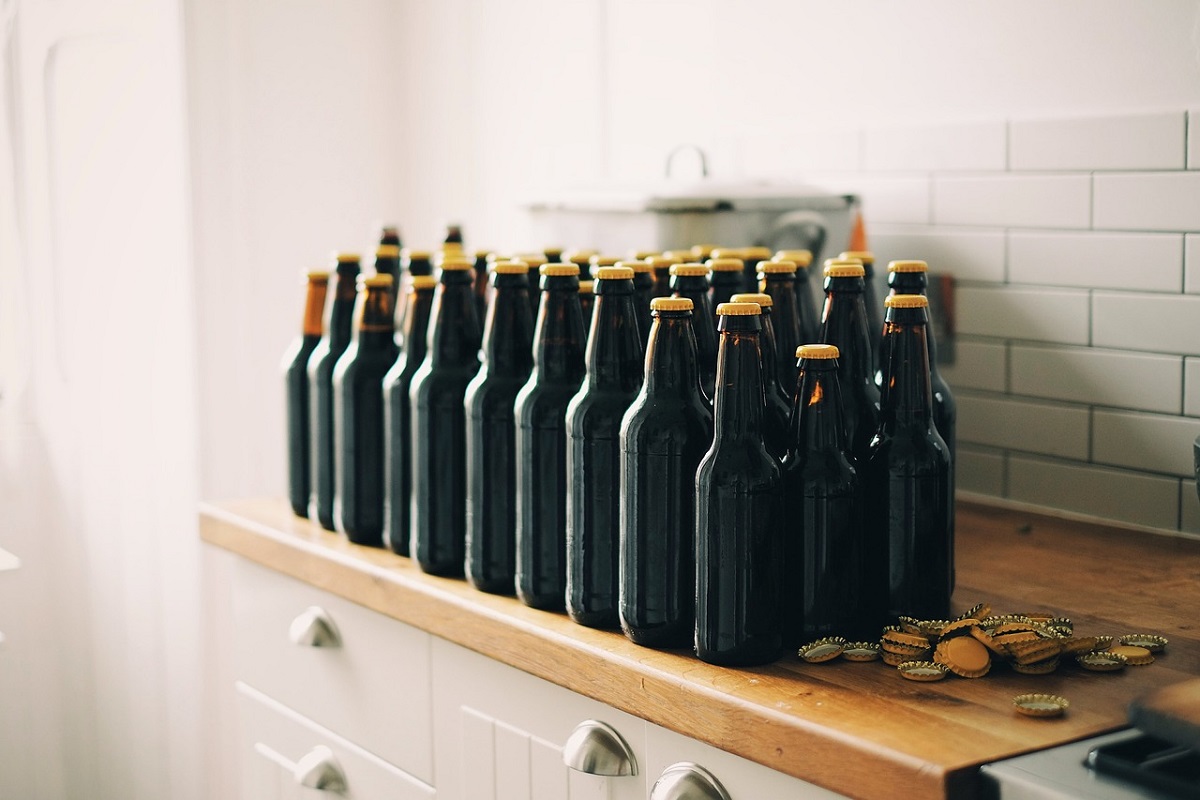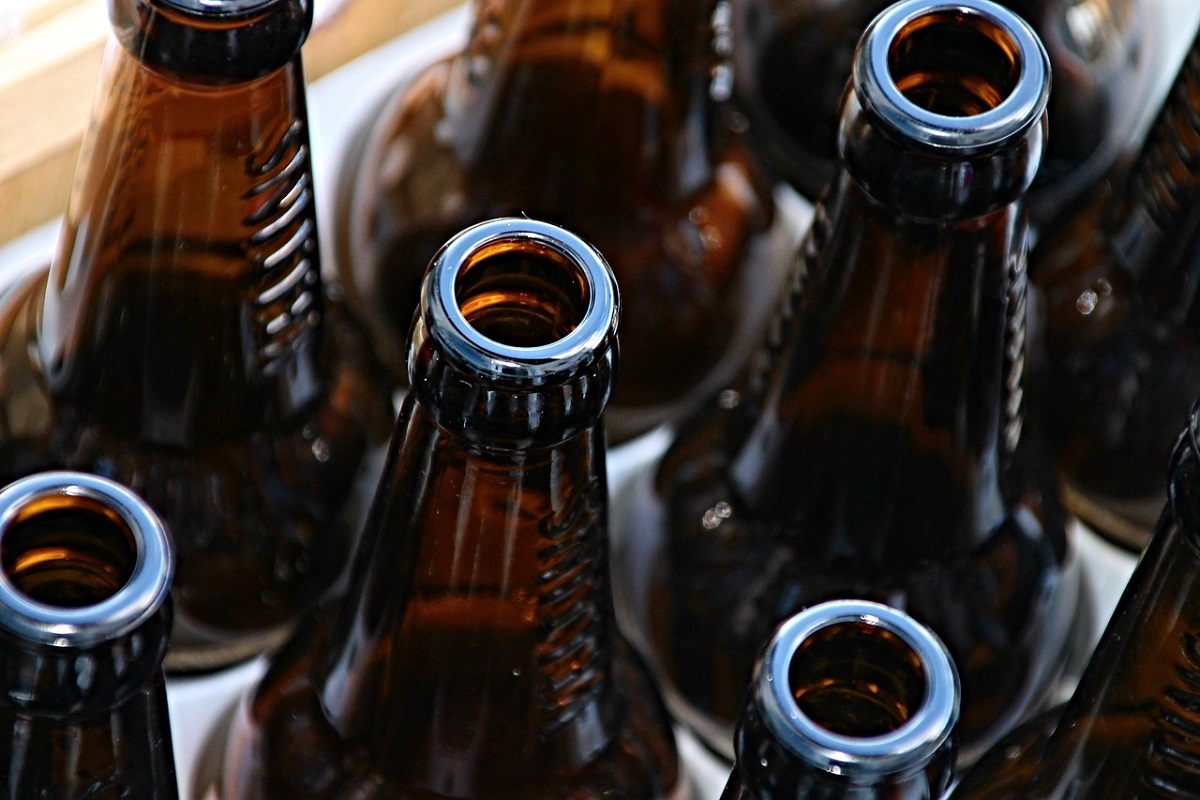Today, we’re going to talk about something that’s often overlooked but still very important when it comes to our favorite beverage: the size of beer bottles.
Have you ever wondered how tall beer bottles are, and what sizes they come in? Well, wonder no more! We’re going to break it down for you in this article, so keep reading below to learn more!

The History Of Beer Bottles
First things first, let’s take a brief look at the history of beer bottles (see also: How Many Ounces In A Bottle Of Beer?).
Believe it or not, the first-ever beer bottles were made of stoneware and were sealed with a cork stopper.
This was back in the day when beer was a precious commodity, and its shelf life was limited. Stoneware bottles were sturdy and airtight, providing an ideal storage solution for beer.
However, it wasn’t until the late 1800s that glass bottles began to gain popularity. With advances in technology, it became easier and more cost-effective to produce glass bottles on a mass scale.
Glass bottles were also much more transparent than stoneware, allowing consumers to inspect the quality of the beer before making a purchase.
Since then, beer bottles have continued to evolve. Today, there are numerous sizes, shapes, and colors of beer bottles available on the market.
Each style of bottle has its unique advantages and disadvantages, and breweries often choose their bottle based on factors such as cost, convenience, and branding.
Common Beer Bottle Sizes
Now that we’ve explored the history of beer bottles, let’s dive into the most common sizes you’re likely to encounter. When it comes to beer bottles, size matters.
The volume of the bottle can impact factors such as serving size, portability, and even taste. Here are the most common beer bottle sizes you’ll find:
12 Oz. Bottles
This is perhaps the most ubiquitous beer bottle size, and it’s the one you’ll see most often at your local liquor store or bar.
A 12 oz. bottle typically contains one serving of beer and is an ideal size for single drinkers or those who want to sample a variety of different beers in one sitting.
16 Oz. Cans
While not technically a bottle, the 16 oz. can has become increasingly popular in recent years. Many breweries have opted to can their beer rather than bottle it due to the lower cost and lighter weight of cans.
A 16 oz. can is the equivalent of one pint and is a great option for those who want a larger serving of beer.
22 Oz. Bomber Bottles
Bomber bottles are a bit larger than your standard 12 oz. bottles and typically hold 22 oz. of beer. These bottles are often used for high-alcohol content beers, such as stouts or Belgian ales, and are meant to be shared between two or more people.
750 Ml Bottles
750 ml bottles are often used for specialty beers, such as sour beers (see also: How Long To Bottle Condition Beer)or barrel-aged beers. They’re equivalent to a standard wine bottle and are ideal for sharing between a few friends.
1-Liter Bottles
1-liter bottles are less common than other sizes but are still used by some breweries. These bottles are great for sharing between a few people and are often used for seasonal or limited edition beers.

40 Oz. Bottles
Last but not least, we have the infamous 40 oz. bottle, a cultural icon that has been a mainstay in American drinking culture for decades.
While not the most common beer bottle size, the 40 oz. The bottle is still popular among some beer drinkers. It’s often associated with cheap, low-quality beer, but there are a few craft breweries that have begun to produce high-quality beers of this size too!
Yet, it’s worth noting that these sizes are not universal and may vary depending on the country or region.
For example, in Europe, it’s more common to find beers in 330 ml or 500 ml bottles, (see also: How Many Calories Are In A Bottle Of Beer?)while in Australia, the standard size is 375 ml. In Japan, it’s not uncommon to find beers in 633 ml bottles.
Beer Bottle Height
Beer bottles may come in different sizes, but they also come in different heights, and the height of a beer bottle (see also: How Long Does Bottled Beer Last?)can impact the way the beer tastes and how it’s perceived by consumers.
So, what are some of the most common beer bottle heights you’re likely to encounter?
As we’ve already seen, the 12 oz. bottle is one of the most common beer bottle sizes, and it’s typically around 9 inches tall, whereas the 330 ml. bottle is typically around 8 inches tall and is slightly narrower than standard 12 oz. bottles.
The 500 ml. bottle is taller than the 330 ml. bottle, with a height of around 10 inches, and the 750 ml. one is around 12 inches tall.
As for the 22 oz. bomber bottle is taller than the 12 oz. bottle, with a height of up to 11 inches, and it’s the extra height that allows for a larger volume of beer and can make for a more impressive presentation.
Finally, we have the classic 40 oz. bottle that is typically around 11 inches tall, making it the tallest of them all!
What To Consider When Choosing A Taller Or Shorter Beer Bottle
When it comes to choosing a tall or short beer bottle, there are a few things to keep in mind. First off, think about the vibe you’re going for.
If you’re heading to a wild party or an outdoor adventure, a short bottle might be your jam. But, if you’re going for an upscale drinking experience or impressing your friends, a taller bottle might do the trick.
Speaking of tricks, did you know that the height of the bottle can actually impact the taste of your brew? That’s right, a taller bottle can allow for more carbonation and a fuller flavor. Plus, a tall bottle can also make for a more Insta-worthy photo.
On the other hand, if you’re on the go or packing for a road trip, a shorter bottle might be more practical. They’re easier to transport and fit better in coolers. But, be warned – you may need to stock up on more bottles for a bigger group.
In the end, the choice is yours, and whether you’re going tall or short, just remember to pick a bottle that fits the occasion and the mood!
The Bottom Line
As you can see, beer bottles do not only come in different heights but in different sizes too, so next time you want to enjoy a beer, check if there’s more than one size available!
- StockHouseBrewing.com is being acquired by MomentumBrewHouse.com - October 24, 2023
- MomentumBrewHouse.com Acquires EmpiricalBrewery.com - August 31, 2023
- How Many Calories Are In A Bottle Of Beer? - May 24, 2023
